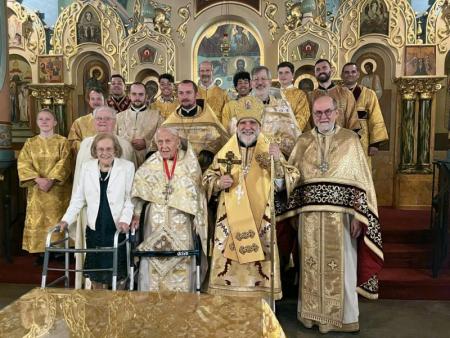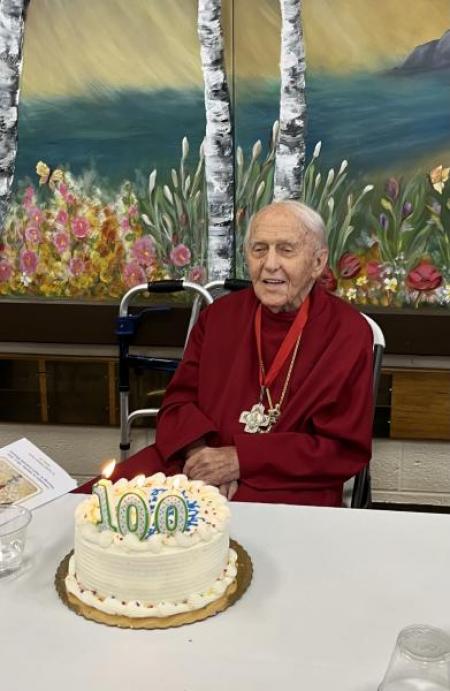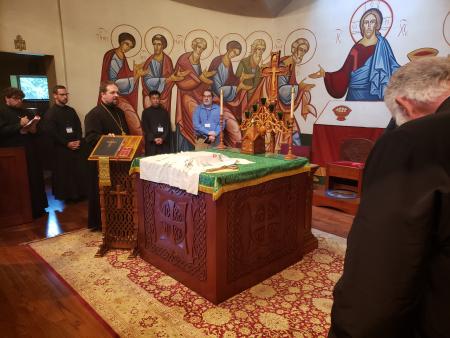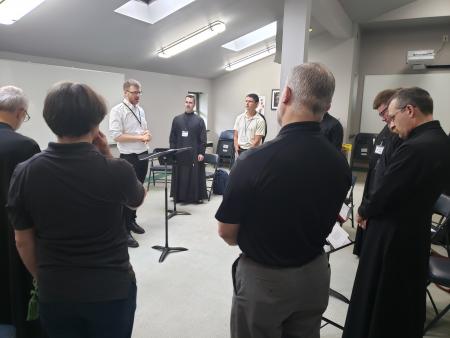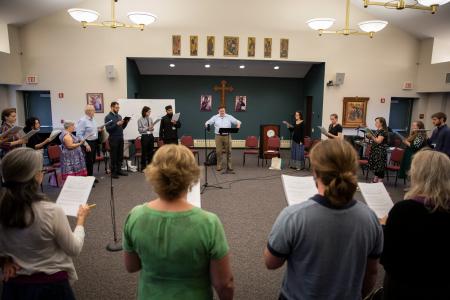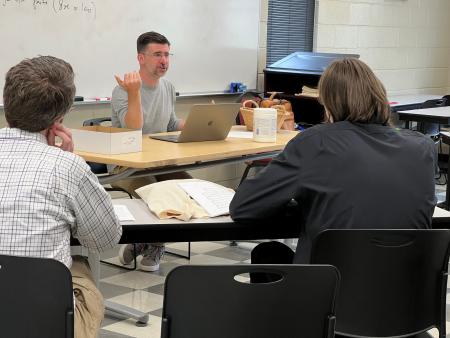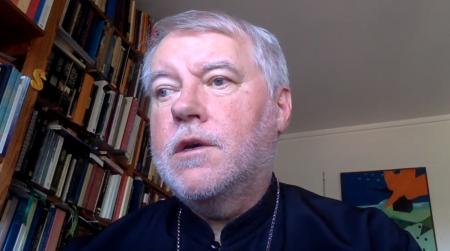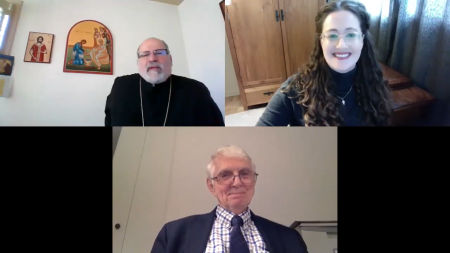Lilly Endowment awards grant to SVOTS to strengthen preaching in Orthodox parishes

The Very Rev. Dr. Sergius J. Halvorsen preaches at Three Hierarchs Chapel
Saint Vladimir’s Orthodox Theological Seminary (SVOTS) has received a $36,300 grant from Lilly Endowment Inc. through its Compelling Preaching Initiative to help strengthen preaching at Orthodox Christian parishes in North America.
Lilly Endowment launched the Compelling Preaching Initiative in 2022 with the primary aim of cultivating practices among aspiring and active preachers that can help them to proclaim the gospel to diverse audiences in more engaging and effective ways.
SVOTS was invited by the Endowment to apply, and is one of several dozen organizations chosen to take part in phase one of the Compelling Preaching Initiative.
“The Orthodox Church is heir to the remarkable preaching tradition of the Apostles and the Fathers who followed in their footsteps,” said The Very Rev. Dr. Sergius J. Halvorsen, SVOTS’ assistant professor of homiletics and rhetoric. “Lilly Endowment’s Compelling Preaching Initiative provides St. Vladimir's Seminary with the unique opportunity to support and enhance Orthodox Christian preaching in North America.”
Father Sergius will serve as SVOTS’ director for this effort.
SVOTS plans to use the one-year Compelling Preaching grant to conduct surveys and interviews of Eastern and Oriental Orthodox preachers and hearers, in order to better understand the strengths and weaknesses of contemporary preaching. Two areas of interest will be how preachers can better support one another in their ministry, and how preaching resonates with hearers in the local parish. The Seminary would then use the information gathered to plan for programs and initiatives—to aid seminarians as well as preachers already plying their craft in parishes—intended to strengthen Orthodox Christian preaching to build up the Body of Christ.
Currently, SVOTS seminarians in the Master of Divinity (M.Div.) program receive homiletics training that includes two core courses in preaching and supervised student preaching in the Seminary’s chapel. Active preachers who are part of the Doctor of Ministry (D.Min.) program take a course in advanced preaching and communications.
ABOUT LILLY ENDOWMENT
Lilly Endowment Inc. is an Indianapolis-based private philanthropic foundation created in 1937 by J.K. Lilly, Sr. and his sons Eli and J.K., Jr. through gifts of stock in their pharmaceutical business, Eli Lilly and Company. Although the gifts of stock remain a financial bedrock of the Endowment, it is a separate entity from the company, with a distinct governing board, staff, and location. In keeping with the founders’ wishes, the Endowment supports the causes of community development, education, and religion and maintains a special commitment to its founders’ hometown, Indianapolis, and home state, Indiana. A primary aim of its grantmaking in religion is to deepen the religious lives of Christians, principally by supporting efforts that enhance congregational vitality and strengthen the leadership of Christian communities. The Endowment values the broad diversity of Christian traditions and endeavors to support them in a wide variety of contexts. The Endowment also seeks to foster public understanding about religion by encouraging fair, accurate, and balanced portrayals of the positive and negative effects of religion on the world and lifting up the contributions that people of all faiths make to our greater civic well-being.
ABOUT SVOTS
Saint Vladimir’s Orthodox Theological Seminary (SVOTS) is a higher education institution that embraces the challenge of serving the Church and the needs of Orthodox Christians in the twenty-first century. SVOTS trains priests, lay leaders, and scholars to be active apologists of the Orthodox Christian Faith—focusing on academic rigor and spiritual formation within a residential Orthodox community. The Seminary is chartered by the University of the State of New York and accredited by the Commission on Accrediting of the Association of Theological Schools in the United States and Canada (ATS) to offer the following program degrees: Master of Divinity, Master of Arts, Master of Theology, and Doctor of Ministry.

